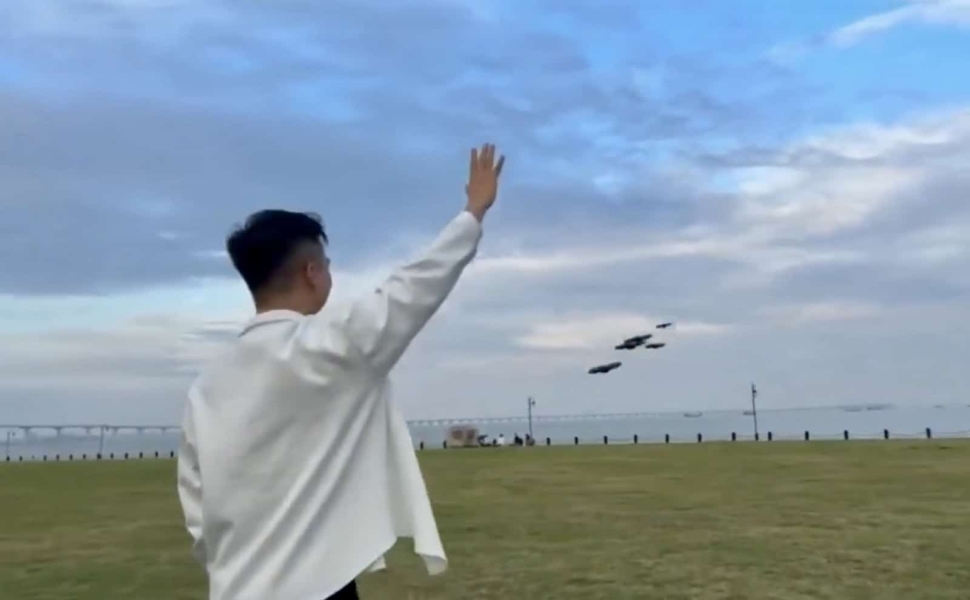DJI Fly App Update Brings Neo 2 Support With Smart New Flight Features

DJI released Fly app version 1.19.0 on October 30, 2025, adding full compatibility with the newly-launched Neo 2 drone alongside intelligent flight features that make the palm-launched platform significantly more capable. The update introduces SelfieShot multi-angle capture, enhanced gesture controls, customizable mode sets, and improved ActiveTrack flexibility—positioning the Neo 2 as DJI’s most accessible content creation tool yet.
The timing signals DJI’s confidence in the Neo 2 platform despite uncertain U.S. availability. By rolling out global app support immediately following the China-only hardware launch, DJI demonstrates the Neo 2’s software infrastructure is production-ready even as regulatory challenges prevent American sales.
Neo 2 Gets Full Controller Compatibility
Version 1.19.0 enables Neo 2 connectivity with DJI RC-N2, RC-N3, and RC 2 remote controllers, according to the official App Store release notes. The update also supports direct smartphone control via Wi-Fi without requiring any remote controller—maintaining the original Neo’s signature simplicity for casual users.
This dual-mode approach addresses both beginner and advanced pilots. Smartphone control keeps the barrier to entry extremely low for first-time drone users, while controller compatibility opens up longer-range flights and more precise manual control for content creators who need it.
The Neo 2’s removable OcuSync 4.0 transceiver module extends this flexibility further. Without the transceiver, the drone operates via standard Wi-Fi with 500-meter (1,640-foot) range. With the O4 module installed, transmission range extends to 10 kilometers (6.2 miles) when paired with compatible controllers and FPV goggles.
Smart Flight Features Transform Content Creation
The Fly app update introduces four major intelligent flight capabilities specifically designed for the Neo 2. SelfieShot mode captures selfies from multiple angles with a single tap, eliminating the need to manually reposition the drone between shots. This addresses a common pain point for solo content creators who previously needed to land the drone, adjust settings, and relaunch for different perspectives.
Enhanced gesture controls now allow users to adjust aircraft position and recall the drone with palm extension gestures. The system builds on the original Neo’s palm takeoff and landing capabilities, making the entire flight experience controllable without ever touching a screen or controller.
Customizable mode sets let users experiment with creative presets including MasterShots and Cycling Follow for dynamic footage. These templates automate complex flight patterns that would normally require significant piloting skill, democratizing cinematic techniques for beginners.
ActiveTrack receives a significant upgrade with support for switching tracking directions on the fly. Content creators can now reframe shots mid-flight without stopping the drone or restarting the tracking sequence—crucial for capturing fast-moving subjects like runners or cyclists where the ideal angle changes constantly.
Voice Recognition Enhancement Signals Broader Trend
DJI notes “enhanced voice recognition capabilities” in the update without providing specific details. This improvement likely supports the Neo 2’s expanded voice command functionality, which allows users to control basic flight operations through spoken instructions.
Voice control represents DJI’s continued push toward more intuitive, hands-free drone operation. Combined with gesture controls and palm launch capabilities, these features position the Neo 2 as genuinely operable without technical expertise—addressing the fear of crashing that prevents many potential users from trying drones.
The original Neo supported basic voice commands but faced criticism for inconsistent recognition, particularly in noisy outdoor environments. If version 1.19.0 substantially improves accuracy and command vocabulary, it could transform voice control from a novelty feature into a practical primary interface.
DroneXL’s Take
This app update confirms what we’ve suspected since DJI unveiled the Neo 2 exclusively in China and Taiwan last week: the hardware is production-ready globally even though regulatory realities prevent U.S. sales. By pushing out worldwide app support on launch day, DJI signals the Neo 2 could hit international markets quickly once trade barriers clear—or through gray market channels if they don’t.
The intelligent flight features represent meaningful improvements over the original Neo, which we covered extensively in long-term testing. SelfieShot and improved ActiveTrack address real usability gaps that limited the first-generation platform’s appeal to serious content creators. The customizable mode sets particularly matter for beginners who want cinematic results without learning complex flight techniques.
What’s notable is DJI’s strategic silence. The company conducted no U.S. marketing campaign for the Neo 2, issued no English-language press releases, and ran no American teaser campaigns. Yet here’s the Fly app update, available globally, with full Neo 2 support baked in. This mirrors the shell company workarounds DJI has employed with products like SkyRover—create the infrastructure, enable the capability, and let market forces find distribution channels regardless of official availability.
For American drone pilots watching the December 23 FCC Covered List deadline approach, this update carries a clear message: DJI isn’t abandoning U.S. users even as regulatory pressure intensifies. The Neo 2 exists, it works, and the software supports it globally. Whether you can buy it through official channels remains uncertain, but the technical capability is there waiting for market access to open.
The enhanced voice recognition deserves attention beyond the Neo 2. If DJI has genuinely improved recognition accuracy across its drone lineup, that benefits Mini, Air, and Mavic users immediately. Voice control has languished as an underutilized feature across consumer drones precisely because reliability issues made it frustrating rather than liberating. Better recognition could finally deliver on the promise of truly hands-free aerial photography.
What do you think about DJI’s global app rollout strategy despite uncertain U.S. hardware availability? Share your thoughts in the comments below.
Photo credit: The New Camera
